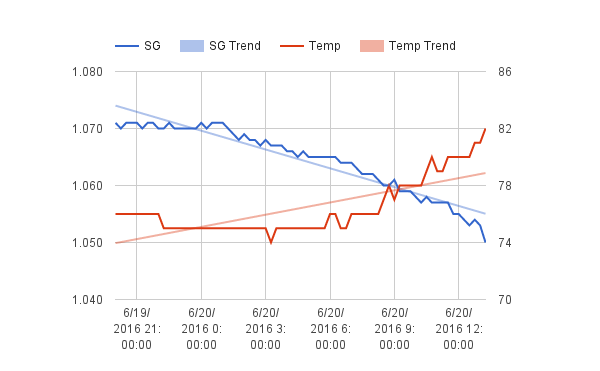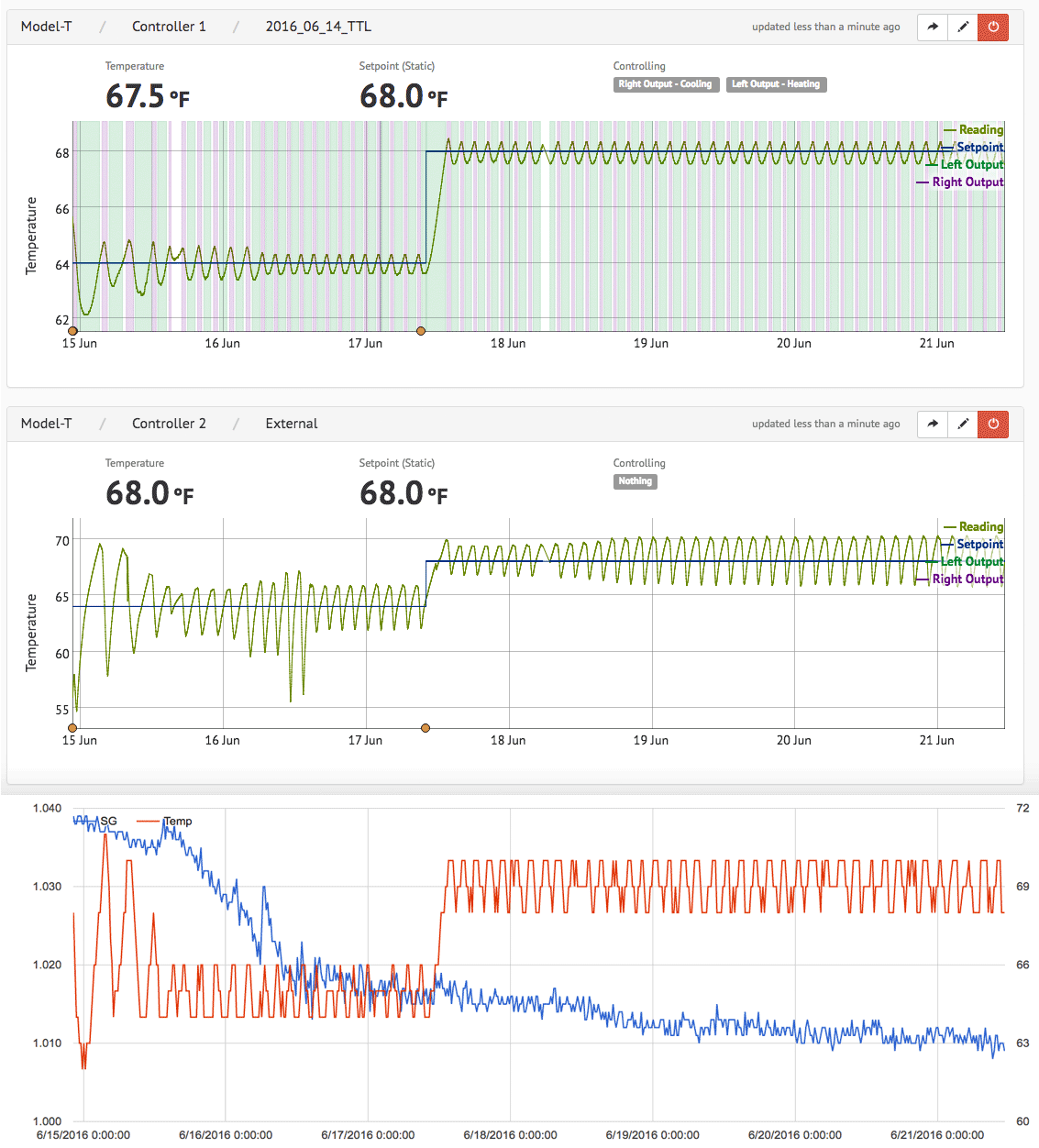Yeah, I would say that the customer service from these guys is great. My first unit had issues, and they replaced it straight away, no questions asked, even sending me the new one before I sent the old one back.
With the latest version of the app they make it pretty simple to calibrate it just using distilled water. Simple drop it in a jar with distilled water, let it acclimate for 15 mins or so, and then use the app to calibrate it to 1.000 SG and the temp of your water.
It probably doesn't hurt to do a multi-point calibration comparing to hydrometer readings and adjusting as necessary. I've got 2-3 calibration points on both of mine, and they're now fairly accurate. I was able to track down any discrepancies (aside from the defective unit) to user error:
Temperature seems off compared to thermowell probe - caused by temperature stratification in the fermentation vessel. Not as noticable during active fermentation as the wort is moving around a bit. BrewOmeter is measuring temp near the surface, while the thermowell is near the center of the vessel. Problem solved by leaving a fan in my fermentation chamber. Now they're always within a degree or two of each other, and I don't get huge temp swings.
Gravity readings initially off and then seem to correct themselves - caused by dumping low gravity starter into beer causing gravity stratification before everything mixes. Normally I oxygenate after I pitch my yeast which mixes everything up pretty well, but I mixed up my steps and oxygenated prior to pitching one time when using my BrewOmeter. Once I realized that, and am sure not to mix up my steps, this problem has gone away.
I've found once you've got it calibrated, you've ruled out brewer's error, and you take into account the stated accuracy of the unit (+/1 .002 gravity points and +/- 2F), you get pretty accurate results.
Accurate enough that I would try to hook this thing into my fermentation chamber temp control or toss out my hydrometers and rely only on its readings? No, not at all.
Accurate enough that I can keep tabs on my beer without going out to the garage and needing to take multiple readings to determine when I can move on to my next stages of brewing? Absolutely.
Now if the darn thing would just measure pH as well, I'd be all set!
FWIW - I have noticed that if you just stare at the app and monitor it in real time you will see fluctuations, but generally not more than the stated accuracy range. Still though it sends two pings per second to the receiving device, and since it send one ping to the cloud every 15 minutes, it's kind of random where you recorded point might land. I've suggested to the developers that they store these 1800 pings over the course of the 15 minute intervals (or some subset of those) and average them before logging the point to the cloud, which I think will help smooth out some of the graph variations. They liked that idea and are looking to incorporate it into a future version of the app.
If you take a look at
http://www.catsmeowbrewco.com/what-s-brewing you'll see a beer that has been going at 80F since June 5th at the top, and a fermenter sour that I did on the 26th at the bottom (started at 100F and chilled down to 58F last night to pitch my yeast this morning). I think these should give you good examples of the types of graphs/charts you can turn out with these things.






